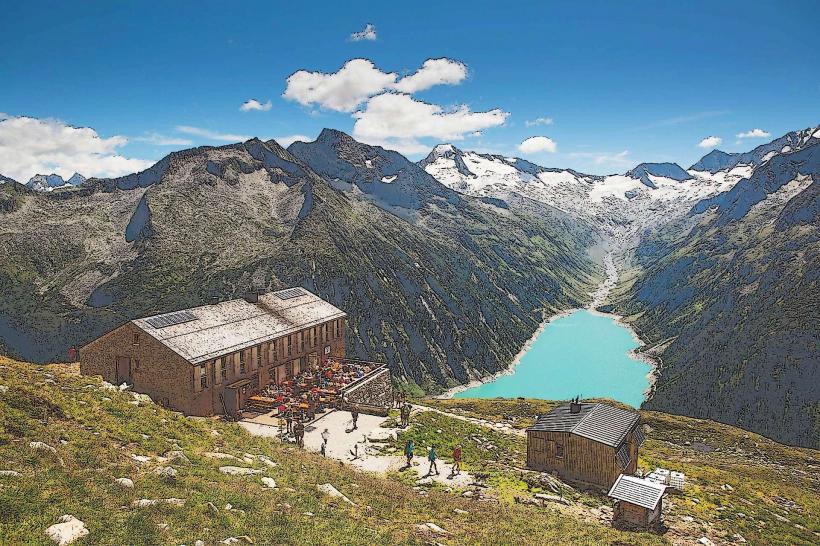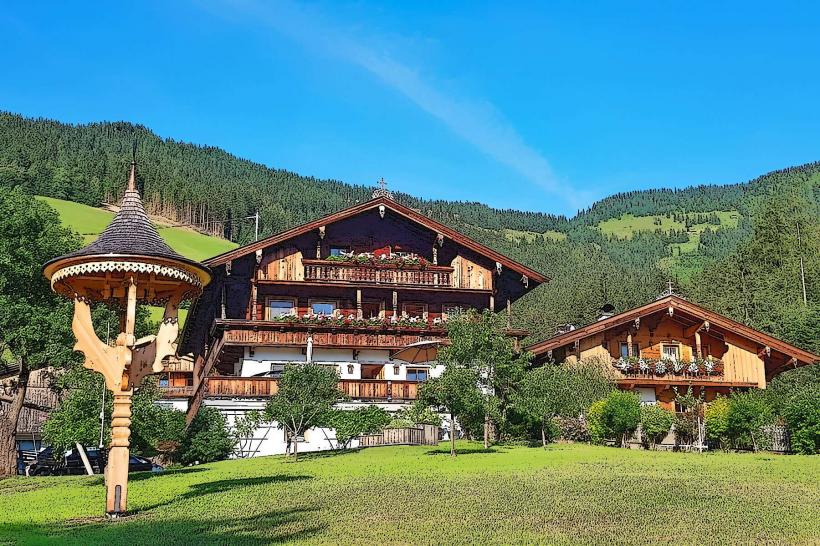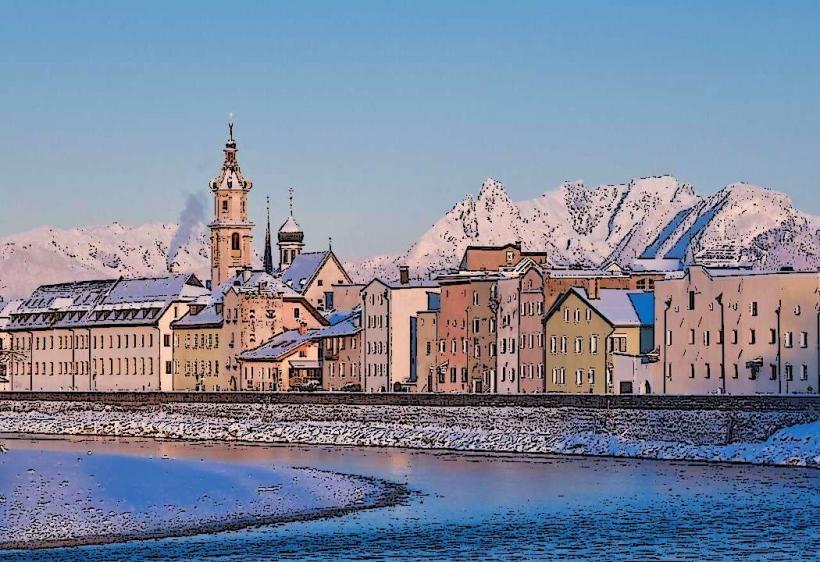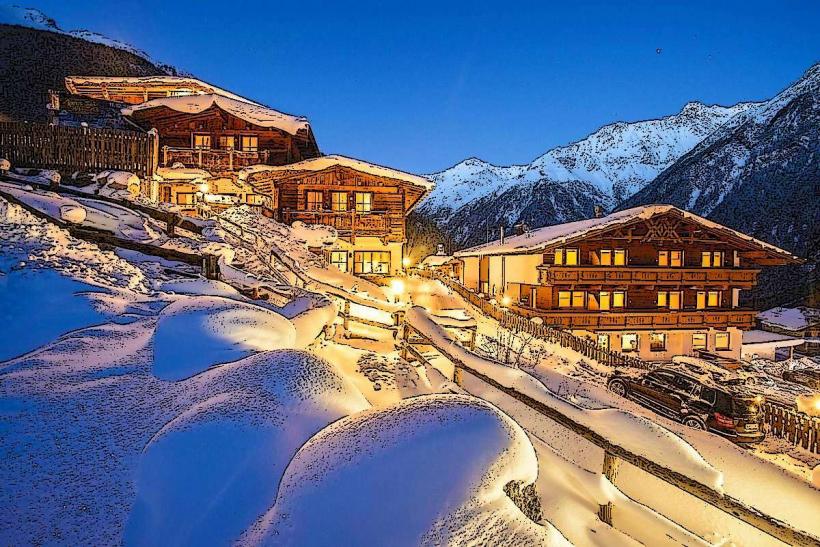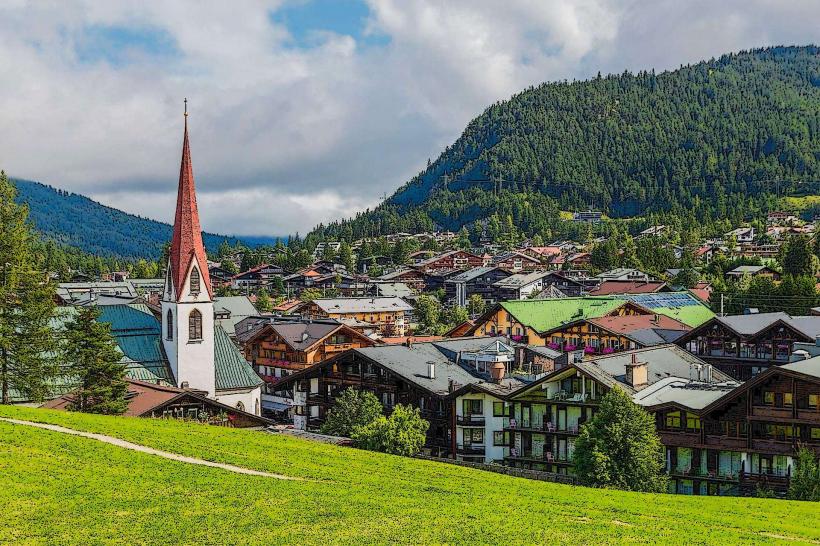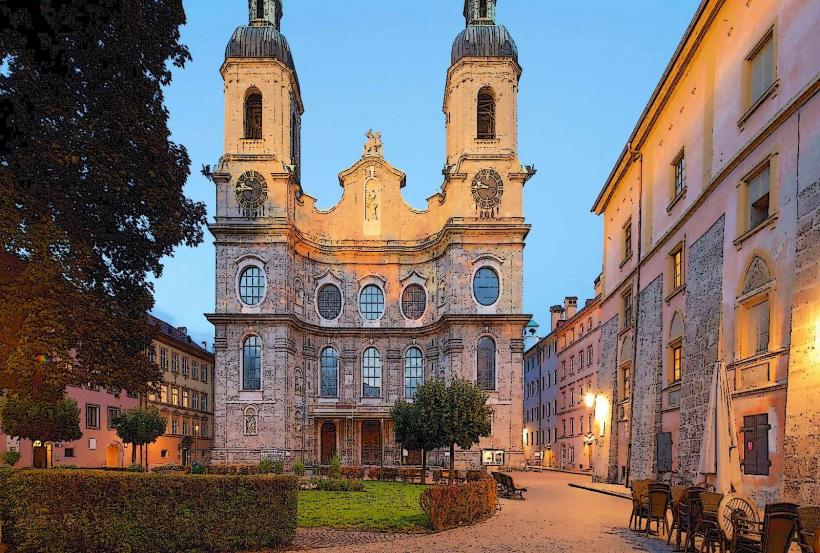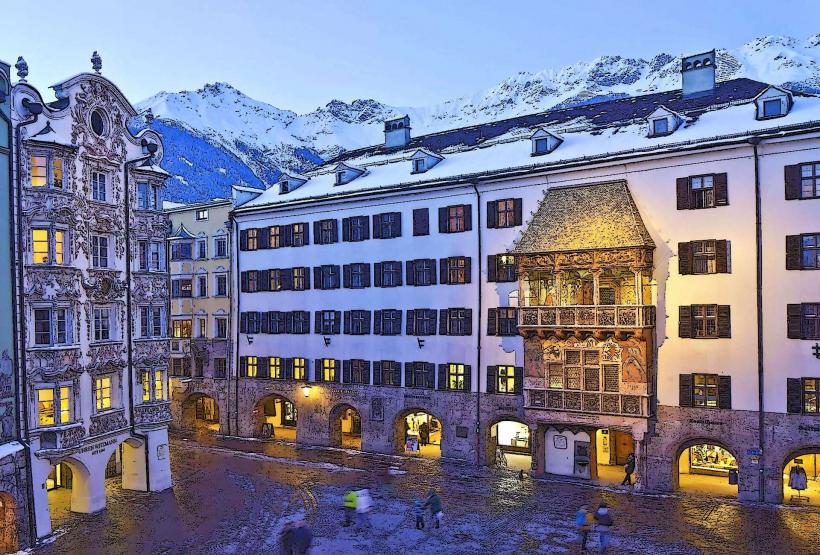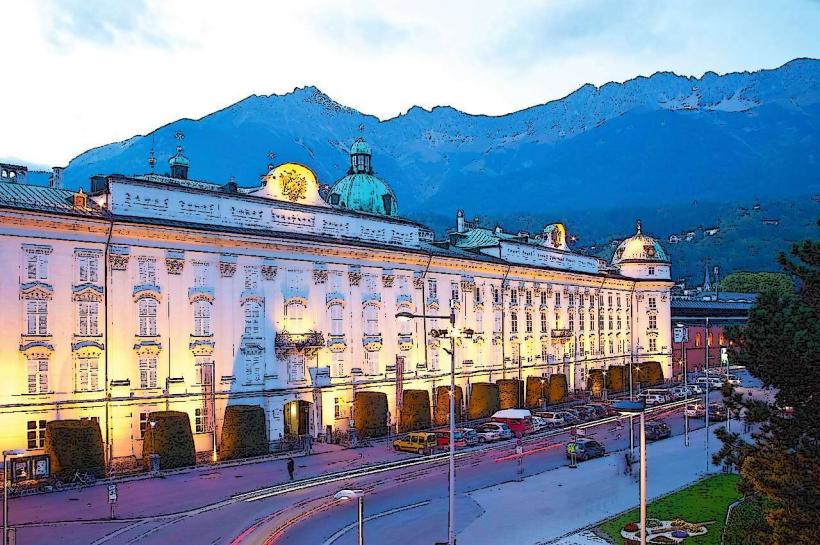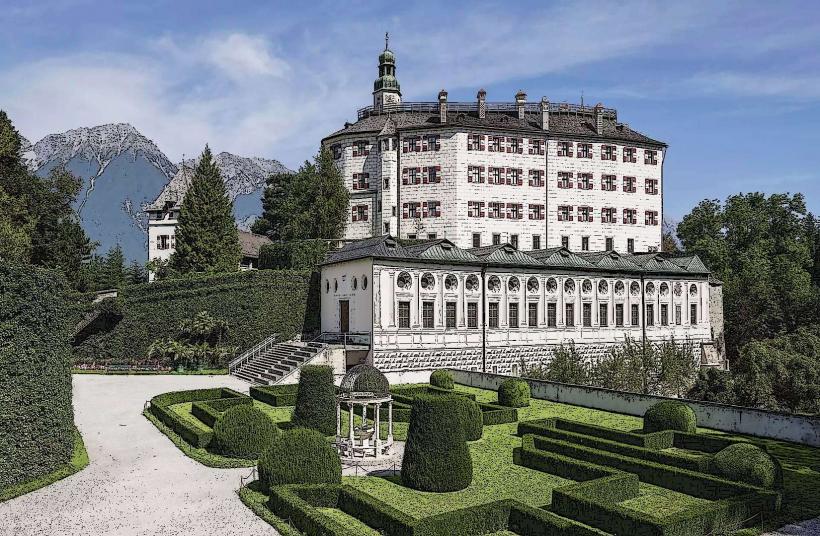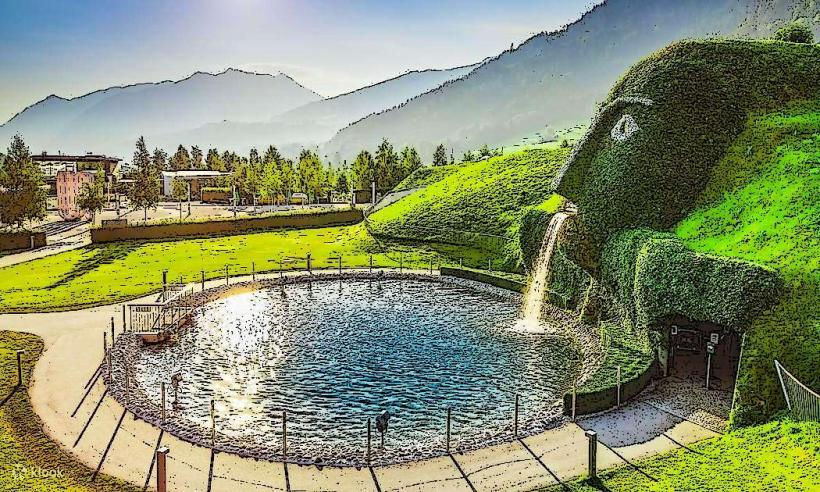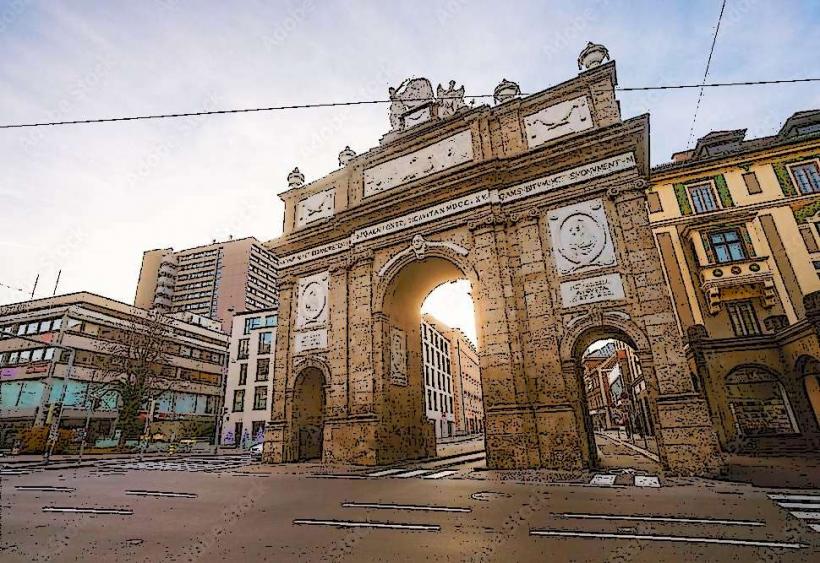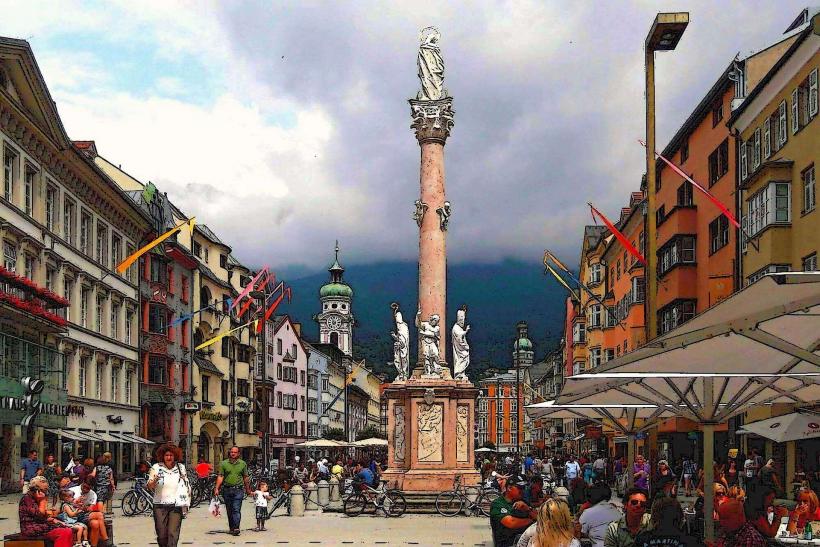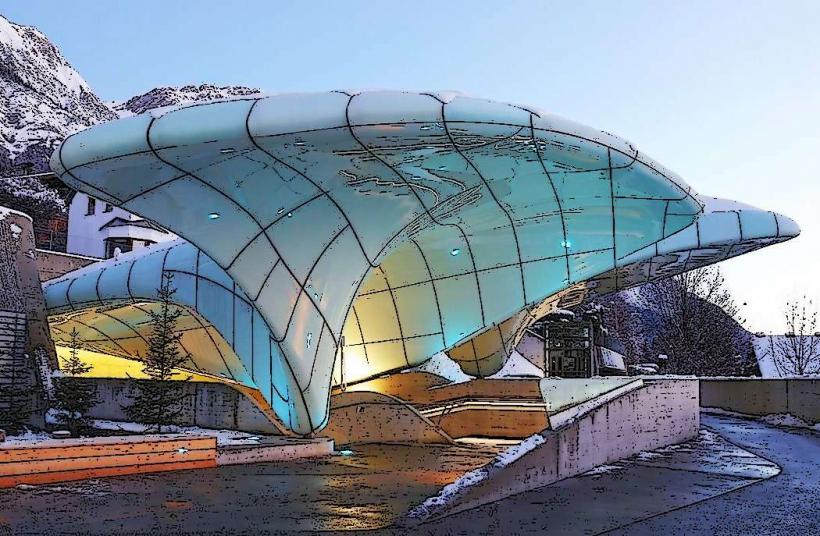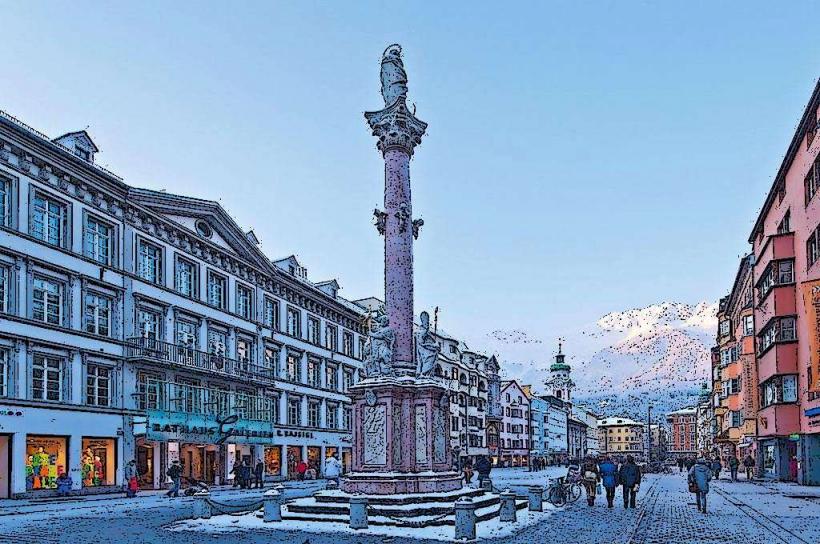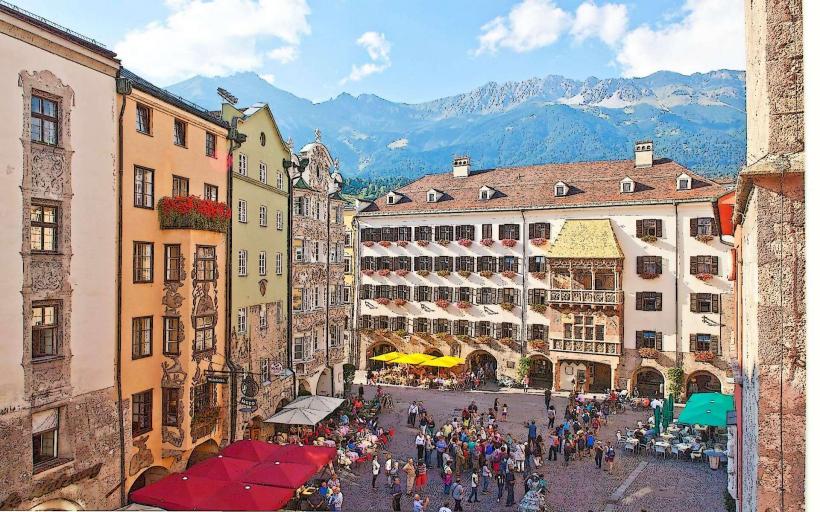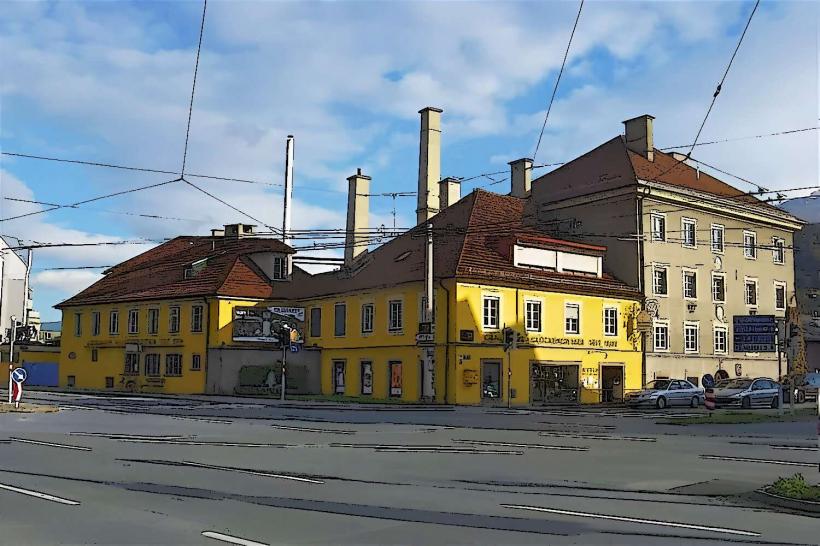Information
Landmark: Wilten BasilicaCity: Innsbruck
Country: Austria
Continent: Europe
Wilten Basilica (Basilika Wilten) – A Majestic Baroque Church in Innsbruck
The Wilten Basilica (Basilika Wilten) is one of the most significant religious and architectural landmarks in Innsbruck, Austria. Located in the Wilten district, just south of the city center, this Baroque church is renowned for its striking architecture, rich history, and stunning interior. The Basilica is also an important pilgrimage site for Catholics in the Tyrol region.
Overview
- Name: Wilten Basilica (Basilika Wilten)
- Location: Wilten, Innsbruck, Austria
- Style: Baroque
- Construction: The current church structure was built between 1751 and 1773, although the site has been home to a religious building since the 8th century.
- Designation: Basilica (since 1923)
- Notable Features: Magnificent Baroque altar, ceiling frescoes, famous pilgrimage church, and historical significance.
Historical Background
1. Early Origins
The history of Wilten Basilica dates back to the early Middle Ages, when the first church on the site was established in the 8th century. This church became a pilgrimage site due to the presence of a revered image of the Virgin Mary. Over the centuries, the church was rebuilt and expanded to accommodate the growing number of pilgrims and worshippers.
- The church has been associated with monastic life since its foundation, with a community of Benedictine monks being involved in its development in the Middle Ages.
2. Baroque Transformation
The current Baroque structure of Wilten Basilica was built between 1751 and 1773, replacing earlier buildings. The design was influenced by the style of the late Baroque period, which was characterized by grandiose and ornate designs.
- The church was commissioned by the Tyrolean prince-archbishop, Sigismund of Tirol, and designed by Giovanni Gaspari, an architect influenced by the Baroque masters of the time.
- The Baroque transformation of the church marked a new era of architectural splendor, with a focus on light, space, and dramatic decoration.
3. Becoming a Basilica
In 1923, Wilten Church was officially elevated to the status of a Basilica by the Pope, a designation that recognized its historical and religious importance, particularly as a pilgrimage destination.
Architectural Features
1. Baroque Exterior
The exterior of Wilten Basilica features typical Baroque characteristics, including a dramatic façade and dome. The church is set against the backdrop of the Nordkette mountain range, which enhances its dramatic appearance.
- Facade: The façade is characterized by ornate detailing, with columns, pilasters, and sculptural elements that emphasize the church’s grand scale. The large dome rises above the structure, making it a striking feature of the district.
- Towers: The two twin towers of the church are relatively simple in design compared to the ornate interior but still provide a significant visual landmark in the area.
2. Baroque Interior
The interior of Wilten Basilica is where the true splendor of the Baroque style is showcased. The church is renowned for its stunning frescoes, altars, and sculptures.
- Ceiling Frescoes: The ceiling of the basilica is decorated with magnificent Baroque frescoes depicting religious themes, particularly scenes from the life of Jesus Christ and the Virgin Mary. These frescoes were painted by the famous artist Johann M. Rottmayr and others, with a dramatic style that captures the divine and the celestial.
- Altar: The high altar is a focal point of the interior. It is richly adorned with gold leaf and sculptural elements, showcasing scenes from the life of the Virgin Mary. The altar is dedicated to the Assumption of Mary, a theme central to the church's religious significance.
- Side Altars: The church also features several side altars dedicated to various saints, including St. Benedict, reflecting the church’s monastic heritage.
3. Organ and Choir Stalls
The church features a magnificent organ located above the main entrance, with a beautifully carved choir stall. The acoustic properties of the basilica make it a popular venue for religious music, including Gregorian chant and Baroque compositions.
Religious and Pilgrimage Significance
Wilten Basilica has long been a pilgrimage site for Catholics, particularly for those seeking to venerate the image of the Virgin Mary. The church has a strong connection to Tyrolean Catholicism and has historically been a center for spiritual reflection and religious devotion.
- The image of the Virgin Mary that was venerated at the church in earlier centuries was believed to have miraculous powers, and many pilgrims came to seek divine protection and blessings.
- The church's status as a Basilica highlights its importance as a place of special religious significance.
Cultural and Community Role
Today, Wilten Basilica continues to serve as an active place of worship for the people of Innsbruck and the surrounding areas. It hosts regular masses, special liturgies, and religious events, especially during important times in the Christian liturgical calendar, such as Easter and Christmas.
- The Wilten district itself is a vibrant area, with the basilica serving as a key cultural landmark. It attracts tourists, pilgrims, and locals alike, drawn by its rich historical significance and architectural beauty.
Visiting Wilten Basilica
1. Location and Accessibility
Wilten Basilica is located in the Wilten district, which is situated to the south of Innsbruck's city center. The church is easily accessible by foot, bus, or car, and visitors can explore the surrounding district, which offers a mix of residential buildings, historical sites, and green spaces.
2. Visitor Information
- Opening Hours: The basilica is generally open to visitors during the day, but mass services and other religious ceremonies may affect visiting hours.
- Tours: Guided tours are available for those who want to learn more about the church's history, art, and religious significance. Information is often available in multiple languages, including German and English.
- Pilgrimage: For those interested in the religious history of the church, the basilica continues to be a place for pilgrims, especially those following the Tyrolean Mary pilgrimage routes.
3. Nearby Attractions
- Wilten Monastery: Adjacent to the basilica, visitors can explore the Wilten Monastery, which is a Baroque complex with historical ties to the church.
- Innsbruck City Center: The basilica is located just a short distance from the Innsbruck Old Town, where visitors can explore the city's other historical landmarks like the Golden Roof, Hofburg Imperial Palace, and Maria-Theresien-Strasse.
Conclusion
The Wilten Basilica is a masterpiece of Baroque architecture, with its stunning interior, religious significance, and role in the cultural history of Innsbruck. As a pilgrimage site, historical landmark, and active place of worship, it stands as a testament to the enduring spiritual and artistic heritage of Tyrol. Whether you are a history enthusiast, an architecture lover, or someone seeking a moment of spiritual reflection, Wilten Basilica is an essential stop in Innsbruck.

